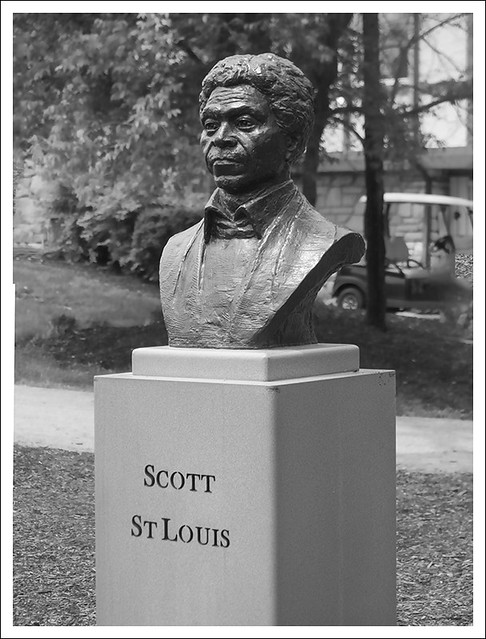Most Americans have heard of Dred Scott but not many of us know the meaning of the U.S. Supreme Court decision that bears his name. The case was about the status of enslaved people who had
been held captive while residing in a free state. Those states and
territories held that a slaveholder forfeited his property rights to his
enslaved individuals within their boundaries and where there was no law to support his controlling the slave.
Congress had never before addressed whether slaves were free if they
set foot upon free soil. Scott, a slave of an army surgeon. moved with his family between free and slave territories with his owner's military postings.
Scott eventually sued for freedom in St. Louis. The case found its way to the Supreme Court which, in a notorious decision made in 1857, ruled that no person of African ancestry could claim citizenship in the United States and had no right to bring suit in its courts. The outrage over the decision was one of the factors that lead to the Civil War.
This bust is located in our Laumeier Sculpture Park. Scott died in St. Louis in 1858 at the age of 59.
Scott eventually sued for freedom in St. Louis. The case found its way to the Supreme Court which, in a notorious decision made in 1857, ruled that no person of African ancestry could claim citizenship in the United States and had no right to bring suit in its courts. The outrage over the decision was one of the factors that lead to the Civil War.
This bust is located in our Laumeier Sculpture Park. Scott died in St. Louis in 1858 at the age of 59.


4 comments:
I did not know that story.
Thats a part of history not many people know. Especially in europe.
le b&w rend la photo encore plus solennelle, bon choix
Most people do not look beyond the bare bones of the story. A formidable bust.
Post a Comment